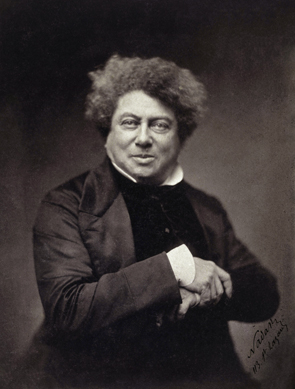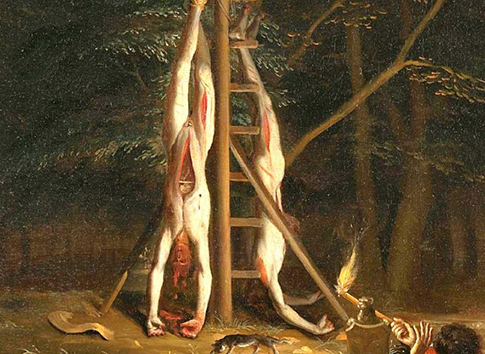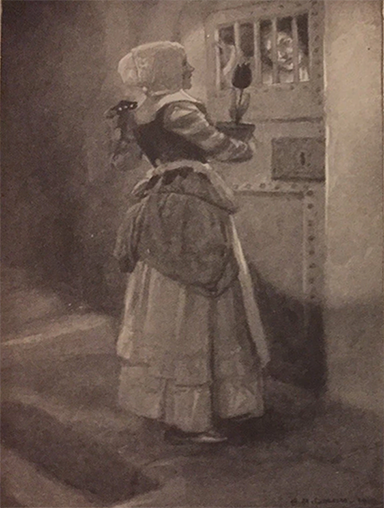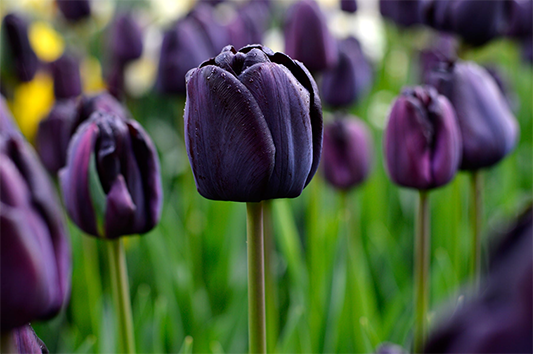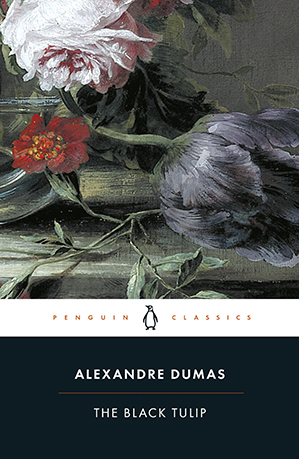

- Category:19th Century Fiction, Romance Fiction
- Date Read:25 August 2025
- Year Published:1850
- Pages:288

Alexendre Dumas is best known for his works The Three Musketeers and The Count of Monte Cristo, neither of which at the time of writing have I personally read. As such I cannot and will not be comparing his novel The Black Tulip to them. [More information about The Count of Monte Cristo can be found on this site by clicking here – ed].
Instead, I will simply focus on The Black Tulip. The book is a historical fiction and romance laced in unfortunate circumstances. The author addresses the reader within the first pages with the assurance that the fictional account of the violent deaths of brothers Cornelius and John de Witt is indispensable to the story that follows it.
This is because the hatred shown to these men by the public of Holland and Prince William of Orange will set in motion the chain of events that befall our true protagonist, Cornelius van Baerle, the fictional godson of Cornelius de Witt. This van Baerle is presented as an innocent and learned man who could be otherwise described as having a head full only of flowers. These flowers of course, being tulips. At the start of the novel, it is Cornelius’ greatest desire is to cultivate the titular black tulip. Aside from the allure of creating yet another new tulip variety, the horticultural society is offering a large amount of money for its discovery.
Unbeknownst to Cornelius, his neighbor and fellow enjoyer of tulips, Issac Boxtel, has grown resentful of his success in comparison to his own. For this reason, he steps into the role of anxious and petty antagonist, who shortly after the death of the deWitts, alerts the state that Cornelius was entrusted with a letter by his godfather, to which he was ignorant of the contents. But being the records of the brother’s contact with the King of France the letter is enough to usher the innocent young man off to the Hague. This leaves his home unprotected, providing opportunity for Boxtel who is sure that before being taken away Cornelius has cultivated the bulbs necessary to grow a black tulip. Unfortunately for Boxtel, Cornelius loves his tulips more than anything and has taken the three bulbs he has produced with him to his likely death.
It is now at the Hague that our leading lady Rosa, the cruel jailer's kind daughter, quietly introduced to the reader at the in the beginning of the novel when the brothers de Witt were still held in prison, reappears. She meets Cornelius van Baerle, now facing a swift execution for his purported crimes. He entrusts her with his last will, and stipulates that she should cultivate his black tulip bulbs in his place and use the prize money as a dowry to marry a man she loves.
Before a sword can disconnect Cornelius van Bearle’s head from his body, the Prince of Orange commutes his sentences to life in prison as an act of mercy, and Rosa is able to have her father moved to work in the prison in which Cornelius is held.
It is from here that he rest of the novel delves further into their romance. Amid the struggles of his imprisonment under her cruel father Gryphus, and the continued attempts of Boxtel to claim the bulbs, Rosa and Cornelius cultivate not just the tulips, but their relationship.
I have not read many romances, but there is a charm to this chaste romance and what I found to be an amusing conflict for Rosa, who at times finds herself worrying she cannot compete with Cornelius’ love of tulips and chides our protagonist: “I see that you love your tulips with such love as to have no room in your heart left for other affections.” Additionally, she grows even more confident and smart as Cornelius teaches her to both read and write.
There is more that occurs, but not wanting to spoil the ultimate fate of the two lovers and their tulips here, even if it is rather predictable, I encourage those interested in seeing love attempt to bloom in a dreary place to read it. It is not my favourite book I've ever picked up. Still, I found it quite enjoyable. I will warn that some readers may find the casual address of the reader by the narrator, sprinkled throughout, awkward or goofy. I find myself rather neutral on it in the end. Finally, if you are curious, despite the plot of this novel, you will not find any naturally occurring pure black tulips, only those of an extremely dark purple.
